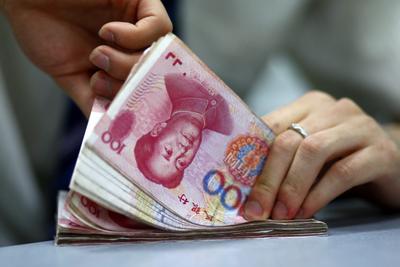Yet many conditions will need to be met to achieve China’s transition to global economic superpower status without major disruptions to the established economic order. An important one has to do with how China is integrated into the international capital market.
China is already moving toward liberalisation of its capital account and internationalisation of the renminbi (RMB). The evolution of the international currency system will have implications for reform of China’s foreign exchange regime. The RMB could play a greater role in the international economy in the future, if it manages these reforms successfully. China has begun to allow the use of RMB for the border trade with its neighbours, such as Vietnam, Laos and Russia; it has introduced RMB settlement of trade between Hong Kong and the mainland; and it has established currency swap arrangements with countries such as Indonesia, Argentina and significantly now with Australia. China is heading toward gradual liberalisation of its capital account and the RMB is being groomed a regional key currency.
It is not yet clear that China’s enthusiasm for internationalising its currency includes a willingness to end financial repression in the domestic financial system, remove cross-border capital controls and allow the RMB to appreciate, thus helping to accelerate the shift of its economy away from export-dependence towards more balanced growth. Initially the government has only been promoting international use of the RMB offshore, walled off from the domestic financial system. That will not be enough to get the job done.
In this week’s lead, eminent Chinese economist, Yu Yongding, a former member of the People’s Bank of China (PBOC) Monetary Policy Committee, puts his finger on the dilemma. Success in capital account liberalisation, as Yu points out, will bring internationalisation of the RMB. But success in both is critically dependent on success with domestic financial market reform.
Yu tracks experience with the introduction of the pilot ‘offshore’ RMB market in Hong Kong. The pilot scheme allows enterprises on the Chinese mainland to use the RMB to settle their trade transactions but also enables enterprises, especially large ones, to channel their funds between the mainland and Hong Kong in the name of RMB trade settlement — capital account liberalisation and internalisation of the RMB hand in glove. In effect, an offshore RMB market has been created in Hong Kong, side by side with an onshore market in China. The former is a free market, while the latter is tightly regulated by the PBOC.
The experiment with the Hong Kong offshore market, Yu points out, demonstrates two things. In the first place, the use of the RMB as a trade settlement currency has stealthily forced open China’s firewall of capital control. Cross-border movements of capital have become an important factor determining the RMB exchange rate, putting substantial pressure towards depreciation, not appreciation, of the currency in mid-September last year. This has made the RMB exchange rate more volatile. In the second place, it shows how progress with RMB internationalisation can be rolled back very easily, as the PBOC intervened to avoid RMB depreciation through maintaining its wedge between the Chinese and Hong Kong RMB markets. After a rapid expansion of the Hong Kong market in the early stage of the pilot scheme, the increase in RMB deposits in Hong Kong has stalled at around RMB600 billion, far short of the market expectation of RMB1 trillion.
China cannot really take the risk of fully liberalising its capital account without first putting its domestic financial house in order and allowing the market to determine interest and exchange rates. The question facing China is not about the desirability of the RMB’s internationalisation. ‘It is’, as Yu says, ‘about the prioritisation of China’s financial reforms and regime changes’. That question is even more acute taking into consideration the fact that the global financial market is still in turmoil and China’s financial markets are ‘in a pretty messy state’.
It is difficult to predict how soon the RMB will become an international currency. That depends significantly on the pace of domestic financial market liberalisation. It is clear that moves towards liberalisation that will assist that development have been accelerating in recent years. If these reforms move forward smoothly, then we can expect the RMB to become an international currency within a relatively short timeframe. But only time will tell as to what role it will play in the future international monetary system and when.
Peter Drysdale is Editor of the East Asia Forum.

